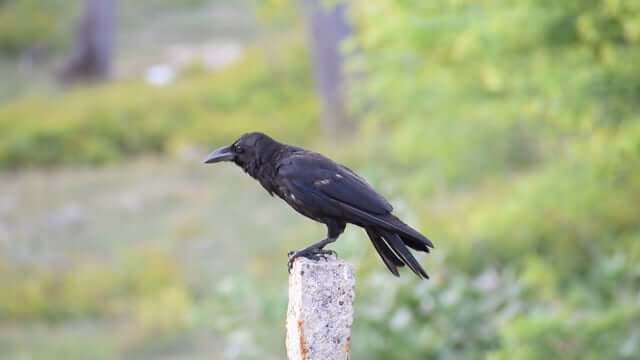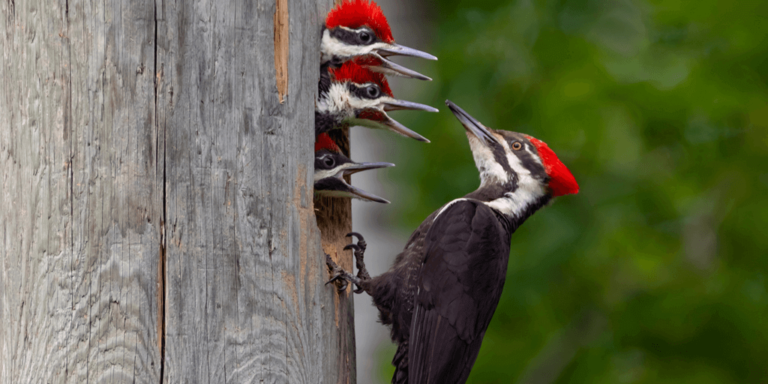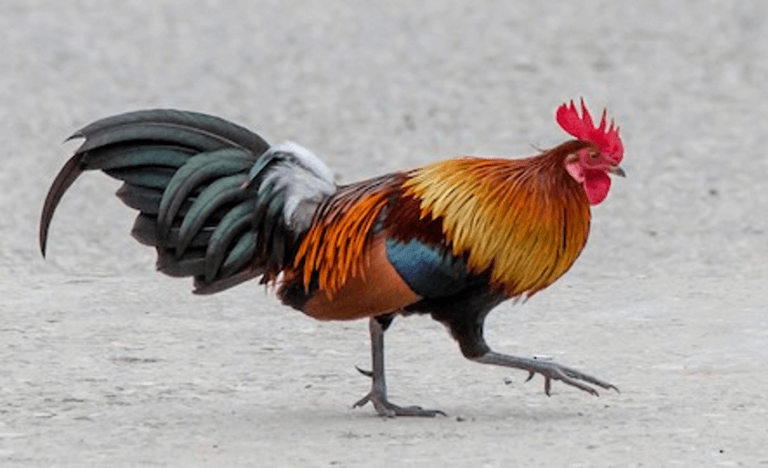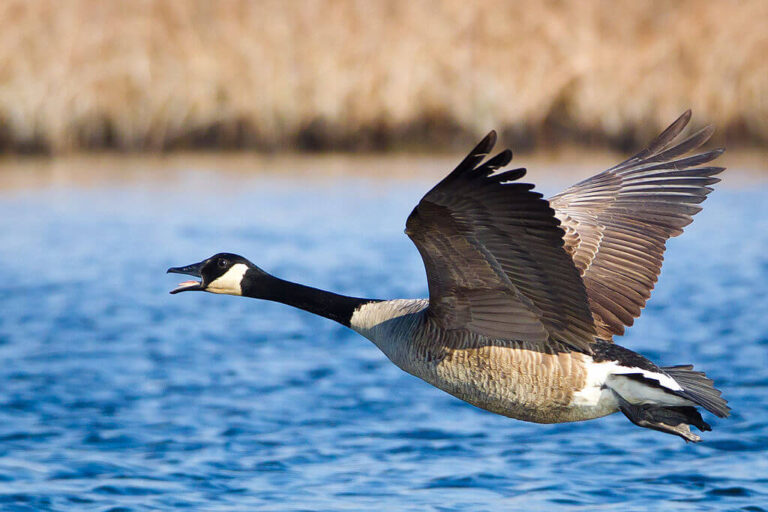The Great Potoo: A Nocturnal Master of Camouflage
The great potoo (Nyctibius grandis) is a fascinating and mysterious bird species known for its excellent camouflage, cryptic behavior, and unique vocalizations. A master of disguise in the treetops of Central and South America, the great potoo has intrigued birdwatchers and scientists alike.
This article explores the bird’s scientific classification, physical characteristics, habitat, behavior, diet, reproduction, predators, conservation status, and relationship with humans. We’ll also dive into some interesting facts and its evolutionary history.
Contents
Scientific Classification
The great potoo belongs to the family Nyctibiidae, which includes seven species of potoos. These birds are nocturnal and are part of the order Caprimulgiformes, which also contains nightjars and frogmouths.
- Kingdom: Animalia
- Phylum: Chordata
- Class: Aves
- Order: Caprimulgiformes
- Family: Nyctibiidae
- Genus: Nyctibius
- Species: Nyctibius grandis
Physical Characteristics

The great potoo is a large bird, measuring around 48–60 cm (19–24 inches) in length, with a wingspan of approximately 70–80 cm (28–31 inches). It weighs between 500–620 grams (1.1–1.4 pounds), making it the largest member of the Potoo family.
Plumage and Camouflage
Its plumage is mottled with shades of brown, gray, and white, resembling the texture of tree bark. This cryptic coloration allows the bird to blend seamlessly into its environment when perched upright on tree stumps or branches during the day. Its ability to remain motionless enhances this camouflage, making it nearly invisible to predators and even humans.
Eyes and Beak
The great potoo has large, round eyes that enable it to see in low-light conditions, as it is primarily active at night. These eyes are yellow or orange, giving the bird an eerie appearance. Its wide beak, often described as “frog-like,” is adapted for catching flying insects in the dark, and bristles around the beak help funnel prey into its mouth.
Vocalizations
The great potoo is well-known for its haunting and melancholic calls, often described as a mournful moan or wail. These vocalizations are commonly heard at night and contribute to the bird’s eerie reputation in local folklore.
Habitat and Distribution
The great potoo inhabits the tropical and subtropical forests of Central and South America, ranging from southern Mexico to northern Argentina. It prefers dense forest canopies, where it can find ample cover for roosting during the day. The bird is found in various forest types, including rainforests, cloud forests, and open woodlands near rivers and wetlands.
- Geographical Range: Mexico, Belize, Guatemala, Costa Rica, Panama, Colombia, Venezuela, Ecuador, Brazil, Peru, Bolivia, Paraguay, and northern Argentina.
Habitat Preferences
The great potoo is most commonly found in lowland forests, although it can inhabit altitudes up to 1,500 meters (4,900 feet). The bird’s camouflage and nocturnal habits make it difficult to spot, and its behavior remains a mystery to scientists.
Behavior
The great potoo is strictly nocturnal, spending the day perched motionless on tree branches or stumps, where it remains camouflaged. At night, it becomes active, hunting for insects and small prey. Its hunting style is characterized by short, agile flights from its perch to snatch prey in mid-air.
Solitary and Territorial
Great potoos are solitary birds and are believed to be highly territorial. They do not form flocks, and sightings of more than one individual together are rare. They occupy large territories and use their vocalizations to communicate with neighboring potoos, especially during the breeding season.
Diet
The great potoo is an insectivorous bird, feeding primarily on large flying insects, such as moths, beetles, and grasshoppers. It also occasionally consumes small vertebrates, including bats and small birds, though this is less common.
Hunting Technique
Its hunting method is “hawking,” where the bird perches silently on a branch, watching for flying insects to pass by. When prey is spotted, the great potoo launches into the air to catch it, using its wide beak and bristles to trap the insect. After capturing its prey, the bird quickly returns to its perch.
Reproduction and Life Cycle
The breeding behavior of the great potoo is still poorly understood, but some information has been gathered from observations in the wild.
Nesting
Great potoos do not build nests. Instead, they lay a single egg directly on the flat surface of a tree branch or in a natural tree cavity. The egg is white with cryptic spots, helping it blend into the surroundings. Both parents share the responsibility of incubating the egg.
Chick Development
Once the egg hatches, the chick is covered in downy white feathers that provide camouflage similar to the adult’s mottled plumage. The chick remains with its parents for several months before becoming fully independent.
Breeding Season
Breeding usually occurs during the dry season, although the exact timing can vary depending on the region. Their reproductive rate is relatively low because they only lay one egg per breeding season.
Predators and Threats
The great potoo’s main defense against predators is its exceptional camouflage. However, despite this, it faces potential threats from a few predators, such as raptors (hawks and eagles) and snakes that might raid nests for eggs or chicks.
Human Impact
While humans do not directly hunt the great potoo, habitat destruction poses a significant threat. Deforestation in Central and South America has reduced the bird’s available habitat, putting pressure on local populations.
Conservation Status
The great potoo is listed as a species of Least Concern by the International Union for Conservation of Nature (IUCN). Although its population is declining due to habitat loss, the species is still widespread, and no immediate threats to its survival have been identified. However, continued deforestation could impact future populations.
Conservation Efforts
Conservation efforts to protect the great potoo focus on preserving tropical forests and preventing further habitat destruction. National parks and protected areas in regions like the Amazon Basin help maintain the bird population of forest-dwelling species.
Interesting Facts
- The great potoo is often mistaken for a broken branch or tree stump due to its motionless behavior and camouflage.
- Its haunting calls have earned it a place in local myths and legends, often associated with omens or supernatural events.
- The bristles around its mouth, known as rictal bristles, help guide insects into the bird’s beak, similar to how a funnel works.
- Great potoos remain in the same perch for several days, only moving when necessary to hunt or avoid danger.
Evolutionary History
The potoo family (Nyctibiidae) is an ancient group of birds that has remained relatively unchanged for millions of years. Fossils of related species have been found dating back to the Eocene epoch, about 56 million years ago. Their unique adaptations for nocturnal hunting and camouflage have allowed them to survive and thrive in tropical ecosystems.
Relationship to Other Birds
Potoos are closely related to nightjars and frogmouths, all of which belong to Caprimulgiformes. These birds share similar nocturnal habits and feeding techniques, but potoos are distinct in size, calls, and cryptic appearance.
Relationship with Humans
Humans and great potoos have had limited direct interaction due to the bird’s secretive and nocturnal nature. In some cultures, its eerie vocalizations have led to its association with death or bad luck. However, more recently, birdwatchers and ecotourists have become fascinated by the great potoo, appreciating its unique characteristics and mysterious behavior.
Ecotourism and Conservation Awareness
The great potoo has become a sought-after species for birdwatchers visiting Central and South America. The increased attention to the species has also brought awareness to the importance of conserving its natural habitat.
Conclusion
The great potoo is a remarkable bird known for its cryptic appearance, eerie vocalizations, and nocturnal lifestyle. Its unique adaptations for camouflage and nighttime hunting make it a fascinating subject for bird enthusiasts and researchers. While its populations remain stable for now, continued conservation efforts are crucial to ensuring the survival of this enigmatic bird in the face of habitat destruction. As humans continue to explore and appreciate the natural world, the great potoo serves as a reminder of the incredible diversity and mystery found in tropical ecosystems.
- Golden Retriever Pros and Cons: What Every Pet Parent Should Know - 15 September 2025
- Cane Corso Dog Breed: Health, Care, and Lifespan - 14 September 2025
- Catahoula Leopard Dogs: Description, Temperament, Lifespan, & Facts - 21 July 2025







